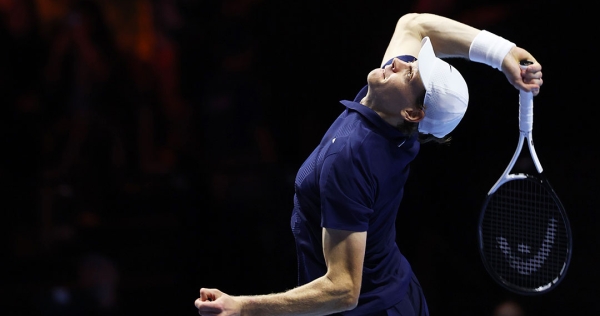The Manchester United second balls strategy that underpinned a famous Anfield victory

Manchester United’s long awaited 2-1 victory at Anfield threw up a few interesting statistics: Liverpool losing four consecutive matches for the first time since November 2014, United ending their run of nine league games without victory in Merseyside, and, finally, back-to-back Premier League wins for Ruben Amorim.However, the stat which encapsulated the match and reflected United’s approach is Senne Lammens’ 45 long balls — defined as balls that travel at least 32 metres (35 yards). The number of long balls played by Lammens against Liverpool on Sunday was the most by a Premier League goalkeeper in a single match since the beginning of last season.The rise of man-to-man marking in the Premier League has meant teams are more willing to go direct, but — as with everything in football — there’s a risk if you aren’t doing it with a purpose. Playing long balls to bypass the press without creating isolated situations for your forwards, combining to attack the space or being ready for the second balls gifts the opponent free possession and leaves you open on the transition.Against Liverpool, Lammens only recorded eight successful long passes, but United were more than ready for the second ball — they knew how to attack it.In the first half, the visitors’ focus on the second ball was more effective down the right side, where Lammens targeted Bryan Mbeumo. The idea was to force Virgil van Dijk or Milos Kerkez into a duel with Mbeumo, while Matheus Cunha’s deeper position helped United win the second ball, before playing it quickly towards Amad.Here, Kerkez wins the header against Mbeumo, but Fernandes is in position to win the second ball and he immediately heads it to Amad.United’s right wing-back is under no pressure because Mbeumo is occupying Kerkez (out of shot) and Cunha’s deeper position is keeping Alexis Mac Allister and Van Dijk — who switched positions with Ryan Gravenberch — in the central space.The other variation was enticing Van Dijk into an aerial duel with Mbeumo, forcing Kerkez to drop and defend the space, which freed Amad. To use this advantage, United had to win the second ball and play it quickly to their right wing-back before Kerkez adjusted his positioning.In this next example, Lammens goes direct towards Mbeumo and Van Dijk goes up to win the header, with Kerkez dropping to defend the space.Meanwhile, Cunha’s deeper role means Mac Allister has to drop to defend the second ball, which leaves Cody Gakpo in a one-versus-two situation against Matthijs de Ligt and Fernandes.On the second ball, De Ligt rapidly plays it to Amad, who has time on the ball due to the manipulation of Kerkez’s positioning.United’s right wing-back then finds Mbeumo down the right wing, with Van Dijk moved out of position.From the deeper role, Cunha attacks the space between Liverpool’s centre-backs…… and despite Giorgi Mamardashvili intercepting his cross, Mason Mount came close to doubling United’s lead.United’s approach of going long towards Mbeumo, winning the second ball and quickly switching it to Amad allowed them to progress the ball and led to a couple of chances. The most important of them was Lammens’ second long ball in the game, which led to Mbeumo’s goal.Here, Mbeumo’s aerial battle with Van Dijk forces Kerkez to distance himself from Amad to defend the space, while Cunha is in the centre circle to help United win the second ball.A ping pong of headers between Harry Maguire and Van Dijk leaves the midfielders waiting for the second ball to drop. Cunha’s deeper positioning momentarily occupies Dominik Szoboszlai, and with Mac Allister entering the aerial duel, Fernandes is free to win the second ball.Throughout the aerial duels, Kerkez maintains his distance from Amad so he can defend the space behind Van Dijk. When Fernandes wins the second ball, he switches it to United’s right wing-back to exploit that advantage.The space and time Amad has on the ball allows him to find Mbeumo’s run behind Van Dijk — who is running back to defend his position — and the forward scores to make it 1-0.In the second half, Amorim’s side lost their composure and were vulnerable on the transition. However, apart from Mohamed Salah’s chance in the 65th minute, these transitions originated from United’s mistakes in possession or a failure to capitalise on counter-attacking situations, rather than losing the second ball after going long.The introduction of Benjamin Sesko empowered United’s direct approach and saw a shift in strategy, with Lammens focusing his long balls towards the left side, as illustrated in the below pass map.Sesko’s aerial ability coupled with Cunha’s immaculate control and first touch allowed United to win multiple second balls in the last 30 minutes, especially with Liverpool moving to a two-man midfield consisting of Florian Wirtz and Curtis Jones.Lammens’ long balls were played to United’s centre-forward against Ibrahima Konate and Szoboszlai, while Cunha — now in a left-sided No 10 role — waited to attack the second ball.United’s second-ball approach didn’t directly lead to chances in the second half, but the corner kick that led to Maguire’s winner originated from Sesko and Cunha being alert on the second ball, after United’s central centre-back won a header in the middle of the pitch.In the attack that leads to the corner, Sesko quickly combines with Fernandes behind Liverpool’s midfield duo, before Cunha attacks the space behind Konate and Szoboszlai with both focusing on United’s centre-forward.Sesko then threads the ball to find Cunha’s run, and the latter’s shot is blocked to win United that corner.In an optimal world for United, the second-ball approach against Liverpool is complemented with periods of controlling the tempo of the match through possession. However, that’s easier said than done.“Coming into Anfield, it’s quite difficult to build up,” Lammens told reporters after the match. “From the beginning, with the defenders, we made the decision that we should get more of a long ball and do it with the second ball, even though we didn’t really have a target striker.“Even though we didn’t have one, the second ball we did quite good, so that’s how we could still push them away, and how we also scored the first one.”The current stylistic landscape of the Premier League has seen a rise in long balls, and, as United demonstrated on Sunday, when done with a purpose it can be an extremely valuable tactic.










